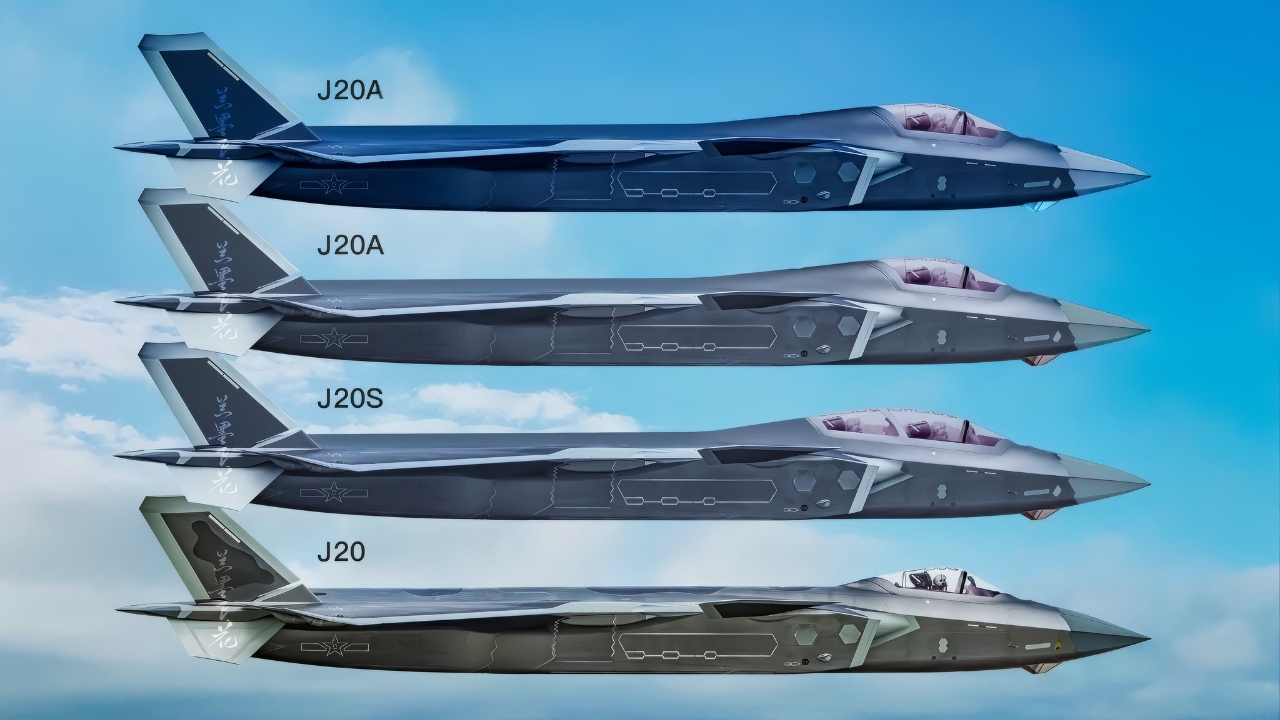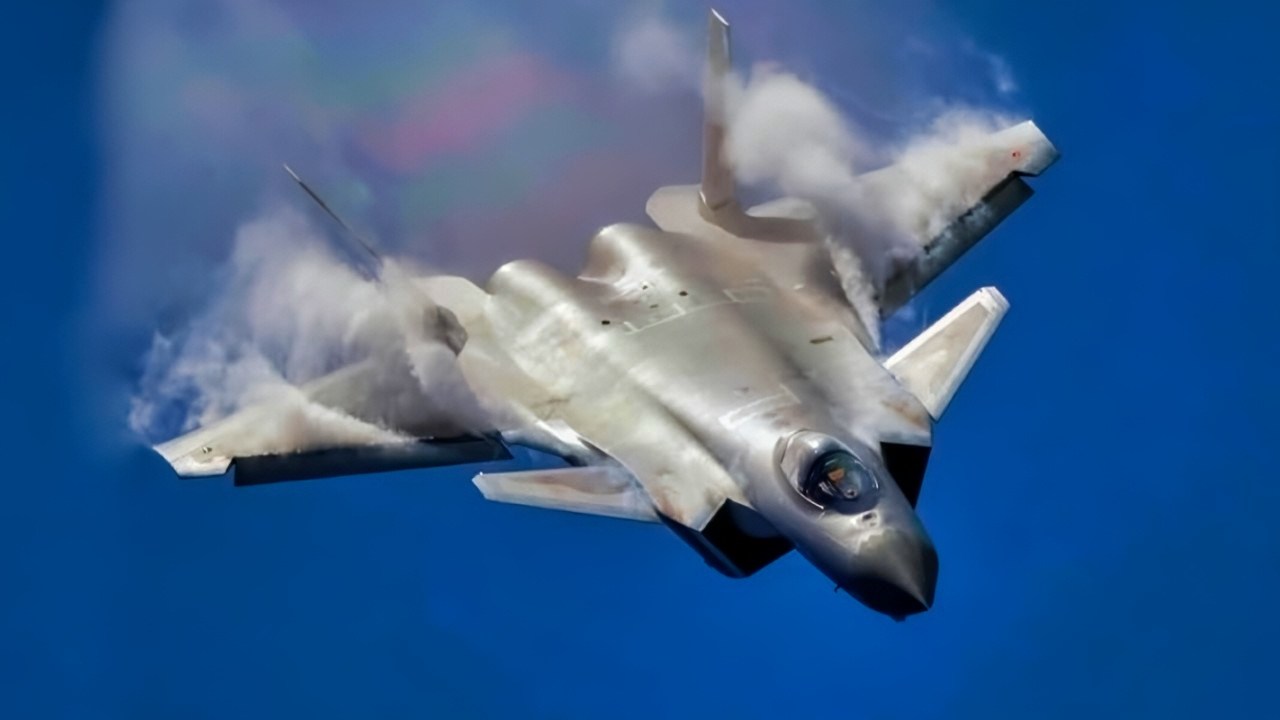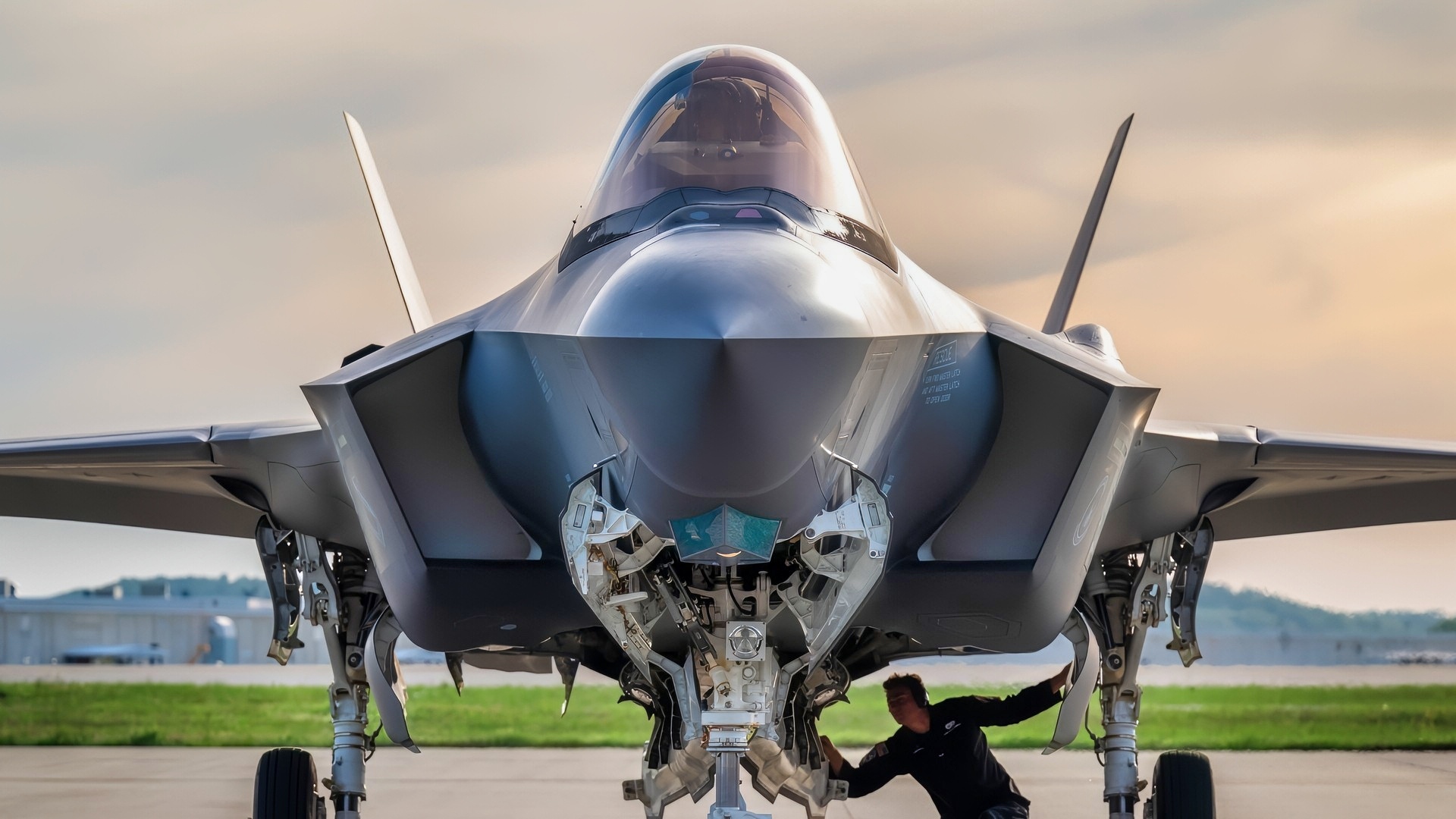Key Points and Summary – China’s J-20 “Mighty Dragon” is the centerpiece of its effort to challenge American air superiority.
-First flown in 2011, the large, twin-engine stealth fighter is designed for long-range air dominance and anti-access/area-denial (A2/AD) missions.

J-20 Fighters from China. Image Credit: Creative Commons.

J-20 Stealth Fighter. Image Credit: Creative Commons.
-While its on-paper specs are impressive—including potential supercruise capabilities—its true combat performance, stealth effectiveness, and engine reliability remain unproven.
-A two-seat J-20S variant is also in development, intended to act as a command node for “loyal wingman” drones. The J-20 represents a maturing Chinese defense industry, but it has yet to face a real fight.
J-20 Mighty Dragon Stealth Fighter Explained
China’s Chengdu J-20 “Mighty Dragon” is the centerpiece of Beijing’s push to field an indigenous fifth-generation stealth fighter – and by extension, to erode what has long been uncontested American control of the skies.
Debuted publicly in the 2010s, the J-20 has become a significant focus of international commentary on the airpower balance in the Asia-Pacific, as well as the situation in Taiwan.
As China continues to build its Air Force and compete more effectively with the West, the aircraft poses significant questions about the future of great-power competition.
The Origins of the J-20
The J-20 program began in the early 2000s as part of China’s push to dramatically improve and modernize its military while reducing its reliance on foreign systems.
After decades of pushing, China is making significant advancements – and Chengdu Aircraft Industry Group’s J-20 is a testament to that.
The program is part of a broader shift in the People’s Liberation Army (PLA) ‘s doctrine toward high-end warfare and anti-access/area-denial (A2/AD) strategies.
Its first flight occurred in 2011, and by the late 2010s, China began inducting production variants into the People’s Liberation Army Air Force (PLAAF).
The motive at that point was to close the widening gap with U.S. stealth fighters, extend China’s reach over the Western Pacific, and deter U.S. power projection closer to China.

Chinese J-20 Fighters. Image Credit: PLAAF.

China J-20 Fighter X Screenshot.
The J-20, then, is seen by Beijing not just as an air-superiority asset but as a signal to the world that China is now a major air-power competitor to the United States.
Over time, the J-20 has been utilized in various roles beyond straight dogfighting, including escorting bombers, suppressing air defenses, and even serving as a command node in drone-led formations.
Design, Features, and Capabilities
The J-20 is a large, twin-engine stealth fighter with a canard-delta configuration and diverterless supersonic inlets (DSI), designed to reduce its radar signature.
Its fuselage is blended with smooth transitions to minimize its radar signature even further – and, like stealth fighters, it carries its weapons internally.
In terms of size, it is larger and heavier than many of its competitors, with estimates placing it at approximately 20.4 m in length and a wingspan of around 13.5 m.
Engine-wise, early J-20s used Russian-sourced AL-31 derivatives or Chinese WS-10 series engines.
China has been working to field a more capable WS-15 engine to realize the platform’s potential fully, and some sources claim that the aircraft already has supercruise capabilities – meaning sustained supersonic flight without afterburner – of around March 1.8.
Top-speed projections also vary, with most analysts estimating it at around Mach 2.8 – although these figures are still speculative.
The aircraft’s sensor systems and avionics appear modern, including active electronically scanned array (AESA) radar, electro-optical targeting systems, sensor fusion, and datalink integration.
A two-seat variant of the J-20 is also under development. Known as the J-20S, the aircraft features an additional crew member to handle electronic warfare, drone command, and suppression tasks. In recent years, images of the J-20S have emerged online depicting it carrying external missiles in a “beast mode” – likely designed to supplement armament when stealth is less critical.

J-20S Fighter Chinese Internet Image.
The J-20 In 1 Word: ‘Potential’
The J-20 plays a pivotal role in China’s airpower doctrine – even as it evolves. The aircraft bolsters A2/AD by putting U.S. assets at risk, targeting support platforms such as tankers, and enabling deep-penetration missions in contested airspace.
And because of its range and payload, it suits China’s goal of contesting U.S. dominance around Taiwan, and in the East and South China Seas.
Over the years, the J-20 has been portrayed as the centerpiece of an emerging manned-drone teaming architecture, where manned fighters are used alongside swarms of drones and unmanned vehicles designed to reduce the risk of losing human life or multi-million-dollar aircraft.
In these scenarios, the J-20 commands “loyal wingman” UAVs to detect, harass, attack, or swarm U.S. fighters.

An aircraft from the U.S. Air Force F-35 Lightning II Demonstration Team arrives at the Kentucky Air National Guard Base in Louisville, Ky., April 19, 2023, in advance of the Thunder Over Louisville air show. The annual event, to be held along the banks of the Ohio River on April 22, will feature more than 20 military and civilian aircraft. (U.S. Air National Guard photo by Dale Greer)
That being said, the J-20 has no combat experience to date, and its operational doctrine is therefore largely theoretical.
For now, the J-20 remains an evolving platform—and not necessarily a proven one. It has yet to face combat; the world doesn’t know its actual stealth performance or engine reliability, but it is a significant piece of hardware.
It is the product of a maturing Chinese defense industry that is now capable of producing indigenous, high-end systems, which were previously beyond the country’s reach.
The aircraft’s continued refinement – from the long-delayed WS-15 engine to the two-seat variant and its integration into networked operations – shows how seriously Beijing takes the challenge of catching up to, and eventually matching, the United States in terms of fifth-generation airpower.
The stakes, however, are high. If the J-35A fails to deliver, it risks becoming a niche or prestige project rather than the game-changer China needs.
If it succeeds, it could become the new workhorse stealth fighter of choice across Asia, the Middle East, and beyond.
About the Author:
Jack Buckby is a British author, counter-extremism researcher, and journalist based in New York. Reporting on the U.K., Europe, and the U.S., he works to analyze and understand left-wing and right-wing radicalization, and reports on Western governments’ approaches to the pressing issues of today. His books and research papers explore these themes and propose pragmatic solutions to our increasingly polarized society. His latest book is The Truth Teller: RFK Jr. and the Case for a Post-Partisan Presidency.
More Military
The U.S. Air Force’s B-52 Bomber and F-35 Fighter Have A Message for Venezuela
Russia’s Mach 4.3 MiG-41 Stealth Fighter Has a Message for the U.S. Air Force
Forget the F-35: The MQ-25 Stingray Might Be the Navy’s Best ‘Weapon’ Against China
Forget the F-35 of F-47: The GCAP 6th Generation Stealth Fighter Is Coming
U.S. and 9 Allies Just Held a Big Naval Exercise Right on China’s Doorstep










